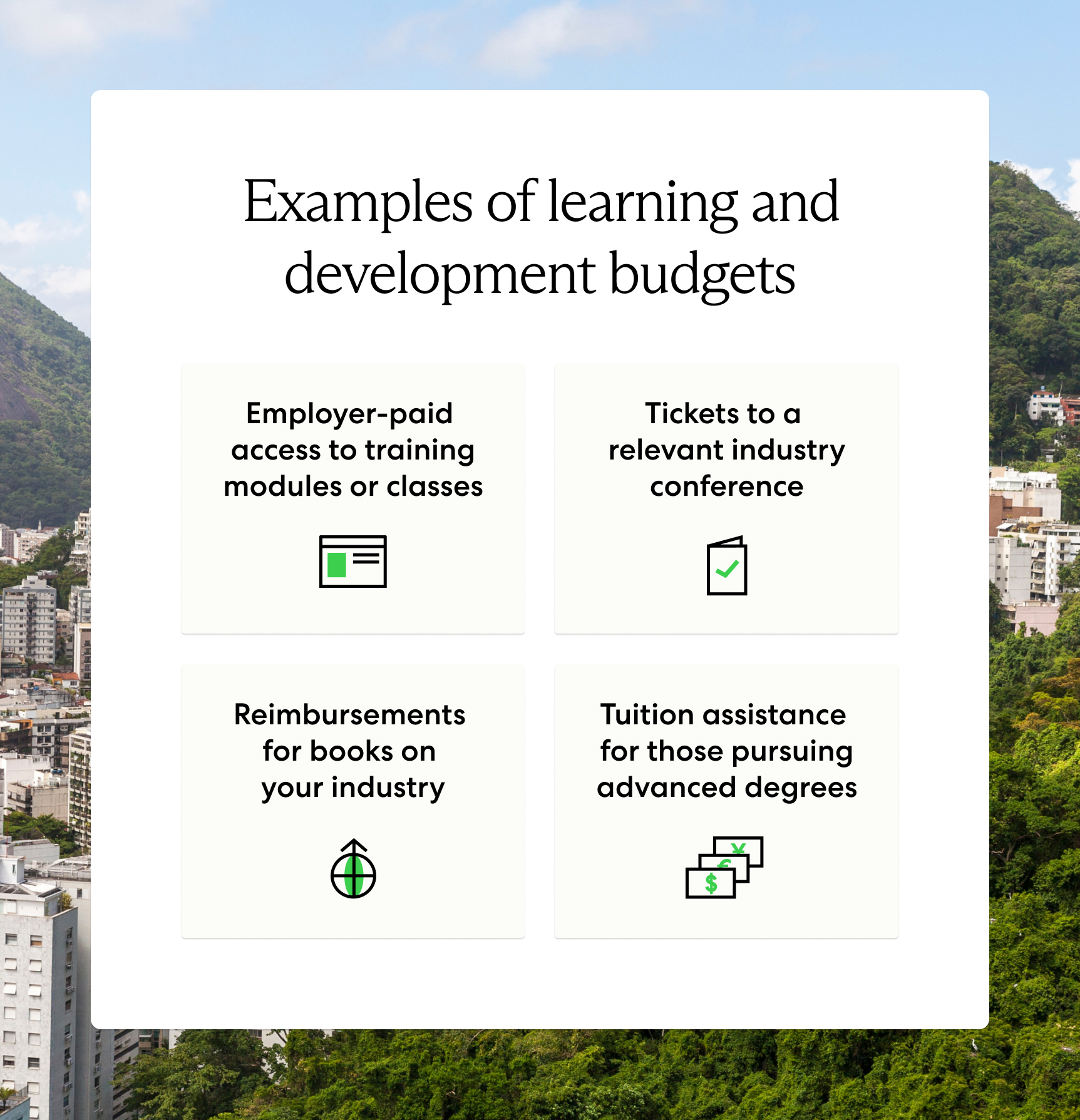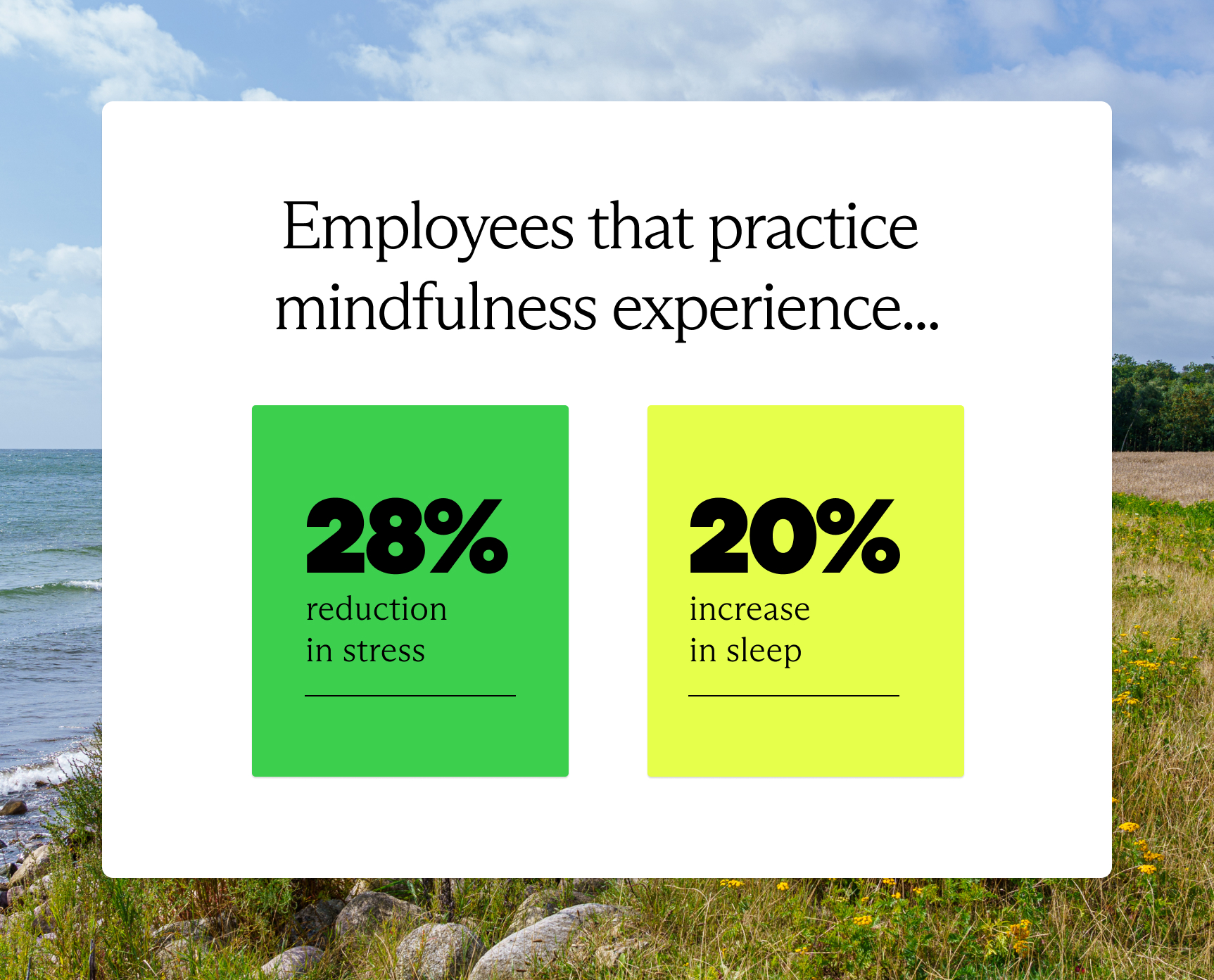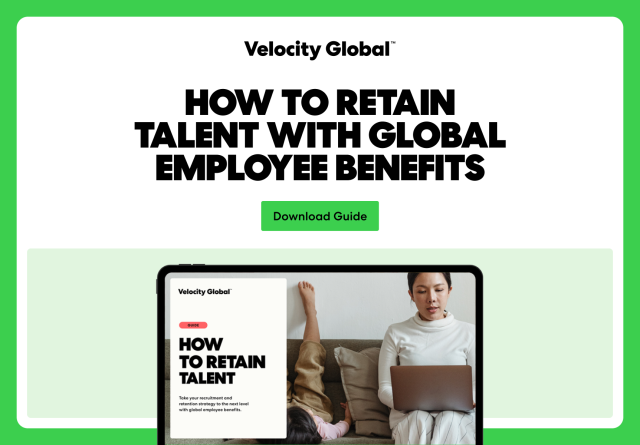Talented employees look for more than the traditional benefits package. Now that remote work has put the entire world at their fingertips, applicants have more options.
Aflac reported that 62% of employees would consider leaving their current position for better benefits, even if it meant taking a pay cut. So, to stay competitive, employers will need to offer creative employee benefits that other employers aren’t.
But what benefits are attractive to employees? What do they really want? What benefits are financially feasible? Think beyond things like on-tap beer and casual Fridays. Thinking outside the box helps attract qualified global applicants and keep current employees happy.
We’ve compiled a list of unique employee benefits that accommodate the demands of work-from-home professionals.
Unique remote work benefits
1. Home office enablement
A remote work allowance, sometimes called a home office stipend, is a bonus that employers give employees to improve their quality of life while working from home. Research from Build Remote shows that the average one-time stipend is $812 or $160 monthly. Some employers name specific things employees must spend their stipends on (think internet bills or desk supplies), while others let the employees decide.
Example: Grant employees $500 per year to upgrade their offices with new equipment, chairs, etc.
2. Connectivity support
Remote offices rely on the internet and other technology. Assisting employees with these bills makes them feel more supported at work and set up with the tools they need to succeed. Plus, employers can pay for more premium plans that will give employees faster internet speeds.
Example: Once per month, give employees an additional $100 on their paychecks to cover internet and phone bills.
3. Ergonomic workspace solutions
Prolonged periods of sitting are linked to health problems like back pain, vascular issues, heart disease, and even cancer. Research shows that ergonomic workstations reduce musculoskeletal disorders by 59% and boost productivity by 25%. Ergonomic workspace solutions like standing desks help break up the time spent sitting during the workday by allowing employees to raise their desks. Purchasing a standing desk for new hires will help support their mental and physical health.
Example: During onboarding, send new hires a standing desk. For current employees, reimburse their purchase of a standing desk.
4. Virtual community building
Some employees report feeling isolated while working from home. A recent survey found that two-thirds of remote employees frequently feel lonely at work. Employers can provide their employees with a community at work by hosting virtual, non-work hangouts to let their employees get to know each other in a casual setting.
Example: Once per month, host a virtual happy hour that takes up the last hour of the workday. That way, employees can mingle and meet each other without having to stay at work late.
5. Flexible workspaces
Not everyone thrives working from home. Providing access to a global network of flexible workspaces, like coworking spaces and open offices, empowers employees to find a convenient workspace that helps them stay focused, productive, and collaborative—no matter where they are.
Example: Encourage remote employees who work in the same or nearby cities to meet at a local flexible workspace once a month to collaborate on tasks and projects in person.
Unique professional development benefits
6. Learning and development budgets
Learning and development (L&D) budgets are a win-win. Not only will employees feel that their employers are invested in their growth within the company, but these investments will also allow companies to upskill employees to be promoted internally down the line. Reports show that companies now invest an average of $1,207 per employee annually in L&D, with large organizations allocating up to $1,689 per employee. These budgets go toward training, conferences, or other tools employees need to level up.
Example: Each quarter, employers pay the admission fee for one conference or training day employees want to attend.

Unique leave benefits
7. Unlimited PTO
Unlimited PTO means employees have as much vacation, sick, or mental health time as they want. According to 2024 data, job listings advertising unlimited PTO have increased by 43.7% since May 2023, though they still represent only 0.16% of total job postings.
In lieu of unlimited PTO, some companies may offer floating holidays in addition to their PTO policy. Floating holidays are paid days off that employees can use at any time at their discretion.
Example: In addition to federal or company holidays, allow employees to take unlimited paid time off.
8. Extended parental leave benefits
Depending on the country’s local jurisdiction, maternity leave is generally about 12–16 weeks long for eligible employees. That leaves parents in the position of working right up until the baby is born to enjoy three months with their newborn or return to the office sooner if they take time off before the baby is born. Extended maternity and paternity leave gives parents more time to adjust to parenthood and take care of their new child.
Example: Employees have enough leave to take off during the last month of the pregnancy and return once their child is a few months old.
Learn more in our complete guide to paid maternity leave by country.
9. Sabbaticals for long-term employees
Repay long-term employees by giving them extended paid or unpaid time off after a certain number of years with the company. Sabbaticals usually last one to six months, allowing employees to take extended paid or unpaid leave to focus on their interests, health, travel, or other passions.
Example: After four years of full-time employment, give loyal employees two months off.
10. Birthday PTO
Birthdays are a special day, yet employees might not take them off to save for vacation days they deem more important. Giving employees their birthday off without making them specifically request it will make them feel celebrated and relaxed without docking their PTO.
Example: Keep a Google Calendar with each team member’s birthdays and plan ahead for their day off.
11. Volunteer days off
Many employees—especially younger ones—are interested in companies that invest in social good. More than just expressing a commitment to charitable causes, demonstrate that commitment by enabling employees to take time off to volunteer.
Example: Once per quarter, allow employees to take a day off and sign up for a volunteer event with a local cause of their choice.
Unique compensation benefits
12. Employer-paid or affordable healthcare
Supplemental healthcare is a critical component of any total rewards package. In some countries, healthcare might not be available to all citizens. For those who secure healthcare through their jobs, many employees appreciate healthcare options that are fully or partly paid for by their employer. This expresses genuine care for employees’ physical and mental health.
Supplemental healthcare is a critical component of any total rewards package.
Example: Offer employees a fully employer-paid plan but give them options to upgrade (at a reduced cost) if they want more options.
13. Childcare reimbursement
Childcare can be a barrier to employment. Providing childcare helps employees with young children succeed in the workplace. Employers can provide stipends to help employees pay for childcare or have an on-site daycare if the company operates in a centralized office.
Example: Set a childcare budget and allow employees to select a daycare that works for them.
14. Student loan assistance
When jobs require a college degree, many applicants will likely have student loan debt. In those cases, student loan assistance alleviates some of the financial strain on employees. Employers can make payments on an employee’s student loans.
Example: Pledge to make a $200 payment on student loans each month for employees who prove they’re actively making payments.
15. Generous 401(k) matching
401(k) matching is when an employer matches their employees’ contributions to their retirement savings account. This allows employees to save more money for their retirement and is an attractive benefit for people of all ages. Employers can either match dollar-for-dollar or partially match each dollar. Usually, employers match somewhere between 3-8% of the employee’s salary.
Example: Match an employee’s 401(k) contribution dollar-for-dollar up to 6% for each paycheck.
16. Referral bonuses
Show trust in employees’ judgment by offering referral bonuses for employees who are hired from internal recommendations. Some companies give referral bonuses when the employee signs their offer letter, while others pay it once the employee has been at the company for a certain amount of time.
Example: An employee recommends someone for an open role. After that person has been at the company for three months, the referring employee is given a $1,000 bonus.
Unique work-life-balance benefits
17. Four-day workweek
A four-day workweek is another growing global trend. These models allow employees to work four days instead of the traditional five. Some companies do this by letting their rosters shorten their workweek to 32 hours, while others have employees work 10 hours per day for four days to maintain a 40-hour workweek.
Example: Deploy an optional program where employees can work 10-hour days in exchange for a three-day weekend.
18. Asynchronous work
Asynchronous work means employees don’t have to log into work at the same time as their coworkers. This is an invaluable employee benefit for global teams, which may be dispersed throughout different time zones. This benefit will help put global employees at ease when applying to the company.
Example: Don’t have suggested or firm working hours as long as team members complete their work by the due date.
19. Flexible start and end times
Allowing a window for the start of the workday rather than a set time makes the workplace more flexible. If employees can report to work any time from 8-10 a.m., for example, early birds can get there when it’s convenient, while those with early-morning obligations and appointments can show up closer to 10.
Example: Employees can show up any time within the start window that works for them, which varies day by day.
Unique wellness benefits
20. Mental health workshops
Caring for employees’ mental well-being shows them they’re more than just workers. Investing in mental health workshops gives employees the tools they need to care for their mental health in and out of the office. These workshops cover where and how to find treatment, coping techniques, and asking for days off.
Example: Some mental health courses cover ways to talk with employees or coworkers about problems they experience to help them cope.
21. Mindfulness app subscriptions
Practicing mindfulness at work is proven to reduce stress levels. Studies indicate that a daily mindfulness practice of just 10 minutes showed a depression reduction of 19.2% and an anxiety decrease of 12.6%. In a separate study by Aetna, researchers found that employees who regularly practiced it experienced a 28% reduction in stress levels and a 20% increase in sleep quality. Giving employees a free subscription to a mindfulness app helps them get started with this practice at work.
Example: Some mindfulness apps allow companies to bulk purchase employee subscriptions.

22. Employee assistance programs
An employee assistance program (EAP) is a program that gives employees access to short-term counseling, mental health assessments, and referrals to outside services for any mental or emotional issues. EAP counselors work with organizations to strengthen their workforce’s mental health. In times of trauma or turmoil, EAPs also help employees and managers solve the issue.
Example: If an employee is experiencing substance abuse, they could contact the EAP at no cost to get short-term counseling and referrals to a therapy program.
23. Discounted travel packages
Many companies stress the importance of employee benefits like paid time off. Yet, for some employees, travel might not be an option. Since travel has been proven to increase mental health and productivity at work, employers might want to also stress the importance of getting out of town (or at least taking a staycation). Offering vacation discount packages make travel more accessible for all employees.
Example: Some employers offer stipends for travel needs like flights, hotels, or rental cars.
Get more inspiration: Top 10 Countries for Employee Benefits
Benefits of adding unique benefits for employees
Organizations that implement distinctive employee incentives create a multitude of advantages for both their workforce and bottom line. Here’s how well-designed employee benefits drive successful outcomes:
- Attract talent. Unique benefits differentiate employers in competitive talent markets, making it easier to attract high-caliber candidates and retain valuable team members. This competitive edge reduces recruitment costs and strengthens employer branding.
- Improved productivity. Strategic benefits programs boost workplace productivity by creating an environment where employees feel valued and supported. When team members have access to benefits that matter to them, they demonstrate higher engagement and performance.
- Cultural impact. Comprehensive benefits packages strengthen company culture by demonstrating a genuine commitment to employee well-being. Investing in employee success fosters loyalty and creates a more positive work environment.
- Cost efficiency. Forward-thinking benefits reduce operational costs through decreased turnover, lower absenteeism, and improved employee health outcomes. These savings often exceed the initial investment in enhanced benefits programs.
- Market leadership. Innovative benefits help organizations adapt to evolving workforce needs and expectations. Companies that stay ahead of benefits trends position themselves as industry leaders and attract forward-thinking talent.
- Value alignment. Strategic benefits packages align company values with tangible employee support, creating a stronger organizational identity. This alignment helps attract candidates who share the company’s vision and values.
Grow with confidence
Growing a business takes planning, strategy, and know-how. For many employers, it also involves innovative techniques and offerings to attract and retain employees. Despite having an endless to-do list, compliance shouldn’t fall to the back burner. That’s where an employer of record steps in.
Download our guide to learn more about how offering comprehensive benefits packages helps attract and retain top talent globally:

Or contact us today to learn how we can help create and administer compliant, competitive benefits to global talent.




